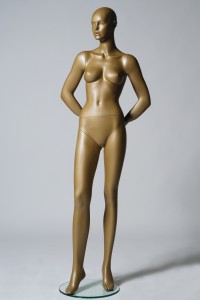 The reasons why a particular person chooses to have cosmetic surgery are personal and varied. However, it is apparent that teenagers going under the knife have different ambitions than adults seeking cosmetic surgery. By and large, cosmetic surgery for teens is done so that teenagers can look and feel “normal.”
The reasons why a particular person chooses to have cosmetic surgery are personal and varied. However, it is apparent that teenagers going under the knife have different ambitions than adults seeking cosmetic surgery. By and large, cosmetic surgery for teens is done so that teenagers can look and feel “normal.”
The controversy
There are two schools of thought when it comes to teenage cosmetic surgery. Proponents of cosmetic surgery for teens say that cosmetic flaws in children have a profound impact on social and emotional development and can cause significant psychological problems. Opponents of cosmetic surgery for teens state that surgery to change the physical appearance of children before they are fully formed can have negative consequences for the child both physically and medically.
There is also an issue about whether a teenage patient can give informed consent. For procedures that are clearly medically necessary, for example an appendectomy for acute appendicitis, a parent or guardian reads and signs a consent form on behalf of the patient. In these cases, the decision is rather easy—the surgery can be lifesaving. With underage cosmetic surgery, the benefits to the patient are harder to quantify or grasp. Clearly the teenagers going under the knife can speak to the benefits that come from plastic surgery, but no one is dying from asymmetrical breasts.
The consensus on teenage cosmetic surgery
The consensus is that there is no consensus. Teenage cosmetic surgery is performed on a case by case basis depending on the physical, mental, and emotional maturity of the child along with the severity and impact of the physical deformity to be treated.
Cosmetic plastic surgeons will generally take into account who made the decision to seek cosmetic surgery. Does the teen want to see a change in her body or does mom just want a pretty daughter. Obviously preference is given to teen patients that desire the surgery for themselves rather than those that are prompted by a parent.
Common teenage cosmetic surgery procedures
With the guiding principle that teens just want to fit in, cosmetic surgery for teens is about changing features that may be considered different. Common procedures include nose reshaping surgery, ear reshaping surgery (or surgery to make ears stick out less), breast reduction surgery, and surgery to make the breasts more symmetrical. Non-surgical cosmetic procedures are extremely common in teens. Laser skin resurfacing to treat acne and acne scarring is quite popular. With the recent increase in childhood obesity, liposuction is gaining popularity as well.
The most common underage cosmetic surgery is rhinoplasty. Teens are often unhappy with their nose’s shape and/or size. Most cosmetic surgeons will not perform teenage rhinoplasty until the patient’s nose has reached its adult size, which occurs roughly at age 16; however, some surgeons do perform this underage cosmetic surgery on patients as young as 13.
Surgery of the teenage breast is perhaps among the most controversial of the commonly performed teenage cosmetic surgeries. The procedures include breast augmentation, breast reduction, and correction of breast asymmetry. Breast augmentation in teenage girls is often asked for but not often performed, mostly because of the FDA. The FDA has only approved the use of saline breast implants for women at least 18 years of age (and age 22 for silicone). For breast asymmetry surgery, a breast implant may be used “off label” to equalize the size and shape of the breasts. Breast reduction, especially when the breasts cause medical problems (back problems, shoulder problems), is routinely performed without too much controversy.
The issues surrounding teenage cosmetic surgery can be complex and should be discussed among the patient, the parent, and the surgeon. Teenagers going under the knife need to be prepared physically, mentally, and emotionally for the procedure of their choosing.
